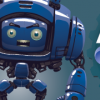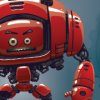 |
User Story Heuristics: Understanding Agile Requirements Agile emphasizes just-in-time requirements rather than upfront preparation. The requirements person—be it the product owner, business analyst, product manager, or someone else—embodies the understanding of what is needed, and the user story represents the work that needs doing. This article details what user stories are (and what they are not). |
|
 |
The Art of Maximizing Work Not Done One of the twelve principles behind the Agile Manifesto is “Simplicity—the art of maximizing the amount of work not done—is essential.” Why is this principle called an art, while the others aren’t? And why should we maximize the amount of work "not" done? This article analyzes the importance of simplicity in agile projects. |
|
|
|
Help Your Team Understand Its Iteration Burndown A good key indicator for measuring how well your agile team is performing is the burndown chart. It’s a simple concept—as time passes, the amount of work to do decreases. Of course, there will be days when progress is not as expected or tasks end up larger than originally estimated. A burndown can help your team reset and keep stakeholders in the loop. |
|
 |
Are You Ready for Go-Live? 8 Essential Questions As real and daunting as scheduling pressures can be, they have to be balanced with the consequences of a potentially disastrous premature go-live. Don’t let all the reasons a system simply "must" be implemented by a target date overwhelm compelling evidence that it is not ready. Consider these eight questions honestly first. |
|
 |
The Benefits of Pair Programming This article details a team’s experience in implementing pair programming as a way to get work done as part of its agile transformation. It delves into the many positive results from the pairing experiment, as well as some of the negatives that were encountered, and weighs whether developers think pair programming is a worthwhile endeavor. |
|
 |
ADC West 2015 Keynote: Lean UX: Turn User Experience Design Inside Out When developing products, features, and enhancements, you have to have your customers’ best interests at heart. “We’re not just creating software,” speaker Jeff Patton said. “We’re changing the world.” You need to better understand the people you’re building things for, and the only way to do that is to spend more time with them. |
|
 |
BSC West 2015 Keynote: Better Thinking for Better Software: Thinking Critically about Software Development Software developer Laurent Bossavit delivered the second keynote presentation, about why we need to think more critically about software development. He began his presentation by saying his intention was to make you question what you know—or what you think you know. |
|
 |
Using the Definition of Done to Promote Continuous Improvement The definition of done is much more than just a checklist for completeness—it can be a mechanism for determining where your product increment can be more complete by the end of your sprint. By using a discussion board with quadrants where you can sort sprint items, you can challenge yourself to see whether a task could be moved earlier in the lifecycle. |
|
 |
How Do You Recruit Team Members with Agile Mindsets? The traditional ways of finding employees are changing. If you want to get a role that will make you happy to contribute to the team, you need to rethink the way you apply for roles. If you are the resource manager, change how you recruit. This article focuses on the qualities you should be exemplifying or looking for if you want to form a team with an agile mindset. |
|
 |
User Story Points versus Man-Hours: Estimating Effort Better Effort estimation is a major challenge for all the stakeholders of a project. Most people generally underestimate situations that may block progress and consider only the best-case scenario for a project. Your choice of estimation method may not be helping, though. Which would be better for your team: estimating by man-hours or by user story points? |
Pages
Upcoming Events
| Apr 28 |
STAREAST Software Testing Conference in Orlando & Online |
| Jun 02 |
AI Con USA Bridging Minds and Machines |
| Sep 22 |
STARWEST Software Testing Conference in Anaheim & Online |
| Oct 13 |
Agile + DevOps USA The Conference for Agile and DevOps Professionals |











